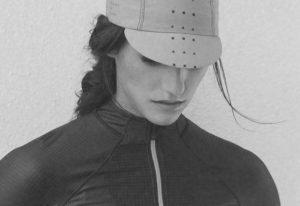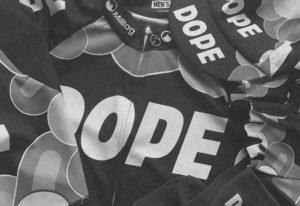Demystifying the future of bike fashion
Road cycling has exploded in recent years, and with it the demand for new types and styles of kit. But what does the future hold for this growing market? And what does that mean for cyclists? We look at 3 emerging trends.
Summer in Manhattan: swarms of commuters hop on their bikes and take to the road. It’s an impressive sight – a complex and fragmented plethora of styles, attitudes and intentions. Whether it’s uber cool brands like Rapha, limited edition kits from Poseur Sport, urban threads from Chrome Industries or minimalist chic from Search and State, bikers flaunt their garb with confidence.
On the other side of the pond in London it’s a similar scene.
Road cycling has exploded in recent years. According to Transport for London, cycling is growing on average 10% per year in the city. In New York it’s 4%.
With all that biking, comes a need for kit and plenty of uncharted market opportunities. But what are the priorities for this new wave of cyclists? Safety first? Style first? To demystify the future of bike fashion, we chatted to some of the movers and shakers in the industry to get a sense of what’s in, what’s out and what’s yet to come.
The geek factor: technology to boost performance
‘Technical’ bike kit means clothing designed to improve the comfort and performance of your ride. That could mean helping you go faster, stay dryer, keep cooler.

Ed Cowburn, Director of Milltag, a London design agency that creates bespoke performance cycle clothing for road cyclists, emphasises that bike fashion is, first and foremost, about technology:
“A lot of us cyclists like to geek out about technology and wear the same as the pros, so if there’s a fabric is 20% lighter than another then we can justify to ourselves that it is worth having.”
Milltag pride themselves in the highly technical material they use to manufacture their kit. Products like their Pro Jersey and Lightweight Hardshell Jacket are ergonomically designed to minimise drag and maximise aerodynamics. They cater for a discerning clientele who are principally looking for technical upgrades to improve their ride.
“I’d say over the last year or two, we’ve been seeing more and more fairly serious riders moving towards technical clothing. Let’s consider the fixed gear scene in London over the decade. 10 years ago it was very ‘jeans and T-shirt’. Now the same guys are wanting skin suits.”
“Ten years ago the fixed gear scene was very ‘jeans and T-shirt’. Now the same guys are wanting skin suits.”
Co-Founder of design-savvy New York label Search and State, Daniel Goldman also emphasises how technical clothing is reaching into new areas of cycling:
“The bikepacking craze [touring with all your camping kit on your bike] has certainly created a trend toward high-performance, lightweight, packable gear.”
Offering a female perspective, founder of women’s cycling magazine Pretty Damned Fast, Anna Maria Diaz-Balart, told us:
“Women are asking for performance. From technical fabrics, to the cut, to simply the number of pockets. I think tech is going to be a larger presence in female apparel in the next few years.
“For instance: women need special chamois that works to protect their bodies. They need wicking fibers and fabric that dries quickly. They want the legs of their shorts and bibs to stay in place without restrictive elastic bands that create uncomfortable ‘sausage legs’. They want apparel that doesn’t sag or bunch or chafe. They want bib shorts that allow them to use the bathroom. They want bib shorts with straps that accommodate busts of all sizes.”
More kit for women: the rise and rise of ‘athleisure’
Although the women’s bike fashion scene is still in its infancy, it’s on the rise. Increasingly women are demanding their own designs, not simply an adaption of a mens’ look or a scaled-down version of a men’s product.

Diaz-Balart has strong opinions on the subject:
“Women want styles and prints that are consistent with general ready-to-wear fashion trends. Muted colors, sophisticated prints, flattering well-placed seams – all need to be present in women’s cycling gear. Garish combinations, princess artwork, looks that scream with hi-viz safety features do not appeal. Women do not want to leave style behind when they ride.”
“Garish combinations, princess artwork, looks that scream with hi-viz safety features do not appeal.”
It’s an opinion echoed by other pioneers in the field, including Jennifer Bandier, owner of the successful athleisure fashion store, Bandier:
“People want to stand out and express themselves. You shouldn’t have to sacrifice personal style just because you’re at the gym.”
Diaz-Balart adds:
“Athleisure has truly opened the floodgates for people to pursue an active lifestyle 24/7 and look completely on-trend. I work as a stylist on photoshoots in New York and it’s been powerfully liberating to commute via bicycle and go directly onto a fashion set.”
The rise in popularity of women’s active wear is changing the way designers think about technical clothing as well. Diaz-Balart says:
“I think we will continue to see performance fabrics and functionality incorporated into more traditional street wear, ie denim, windbreakers and rain jackets, wicking base layers.”
Express yourself: finding your own unique style
Whether it’s bespoke or limited edition kits, more and more riders are looking for ways to express their personality on the bike.

Ed from Milltag says:
“We see it with our customers. People are enjoying being more individual and wearing stuff that no one else has got. They are thinking about doing stuff for themselves, just for fun. Why spend 150 pounds on a jersey when you can get something completely unique at an amazing standard without spending that much more?”
“Why spend 150 pounds on a jersey when you can get something completely unique without spending that much more?”
Milltag is essentially offering just that: a chance for people to entirely customise their look, at virtually the same price.
“Being individual will be a key thing in the next few years. We want that sense of individuality in how we live our lives. You can buy cars these days and change almost every element so that you can have something that is a little bit more unique. It’s the same with biking.”
Daniel Goldman agrees:
“The focus of cycling fashion is on individuality and having options. It’s pretty much the same as what is happening in sportswear and street fashion. People want to find unique things that not everyone else has and they want to attach themselves to brands that have good messages and legitimate stories to back up their products.”
As cycling becomes synonymous with simply walking down the street, individual style is not only becoming more important, it is becoming a prerequisite.
So what will 2020 look like?
Well, in addition to all the above, we’re looking forward to these trends:
- sensor-driven kit that can anticipate and adapt to a variety of biking conditions
- minimalist, ‘invisible’ bike helmets that deploy only in an emergency
- smart clothing that communicates performance data straight to your phone
The future can’t come too soon!

